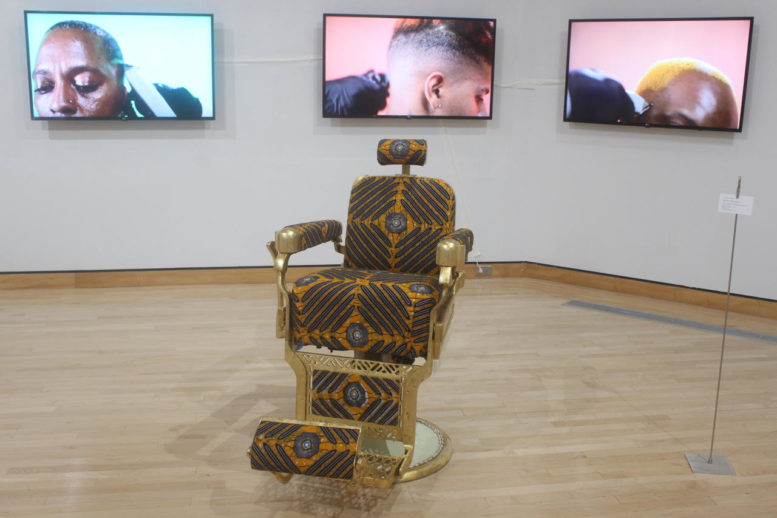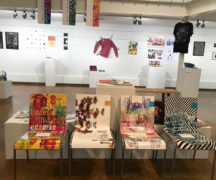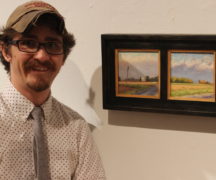By DAVID DUPONT
BG Independent News
Other art exhibits have focused on the Black male, including a major show at the Whitney Museum as far back as 1994. For Michael Harris, though, those exhibits lacked something – enough authentic voices of the Black male.
African American male, specifically male heterosexual artists, were under-represented. “They tended to be skewed off center for the majority of black men,” Harris said. “There are often hidden realities and nuance that outsiders never get access to. … Those were the ideas that percolated in my mind behind the show.”
Harris, an artist and historian, seeks to redress that gap with “Visible Man: Art and Black Male Subjectivity” now on exhibit through Nov. 7 at the Bryan Gallery in the Bowling Green State University Fine Arts Center.
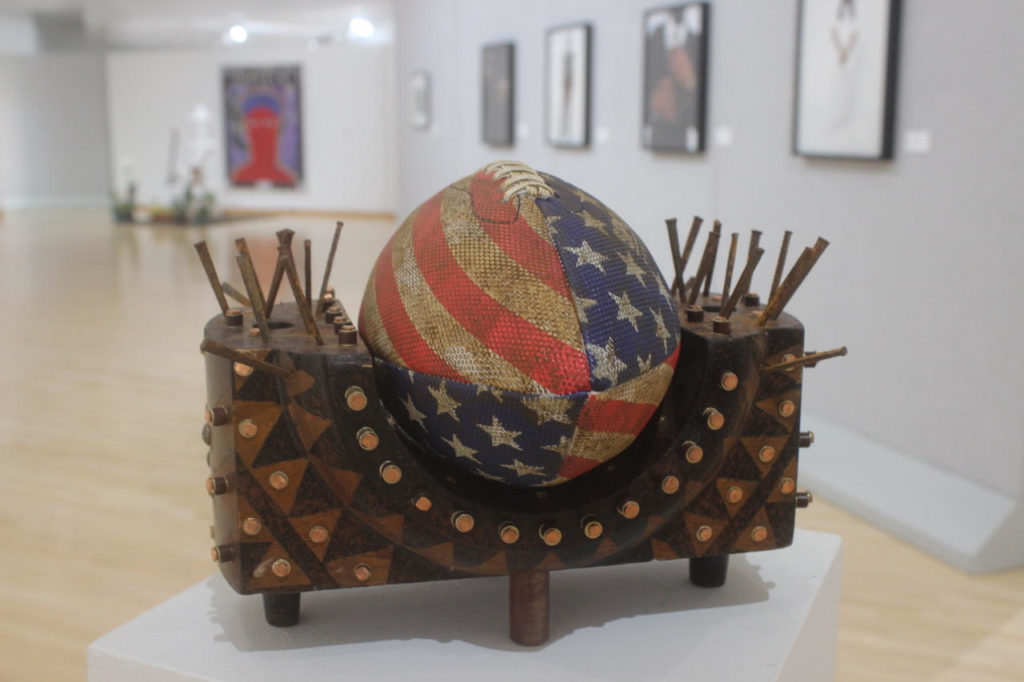
The 1971 BGSU graduate was invited to curate the exhibit as a follow up to the 2018 tribute to Bernie Casey, “So Much More … Ohio’s African-American Artists.” Like Casey, a 1961 BGSU graduate who returned to earn a graduate degree, Harris came to campus as an athlete. Most African American students at the time were athletes.
Harris was one of the students who agitated to change that and to bring more Black students to campus.
When he came, he said, there were 100 Black students at BGSU, most athletes. When he left there were 500. “I was one of the students who was sent to various cities to recruit minority students to Bowling Green,” Harris said in a recent telephone interview. And shortly after he graduated the Ethnic Studies Center was launched, initiating a focus on diversity that continues to evolve.
Whatever group is being studied, “the principle is the same,” Harris said. “You need to have the subject be a part of the conversation. It gives it validation.”
Still, Harris said, “I didn’t want it to be just one perspective. It should have a variety of perspectives.” He was looking for the diversity and nuance that expands the view of the exhibit.
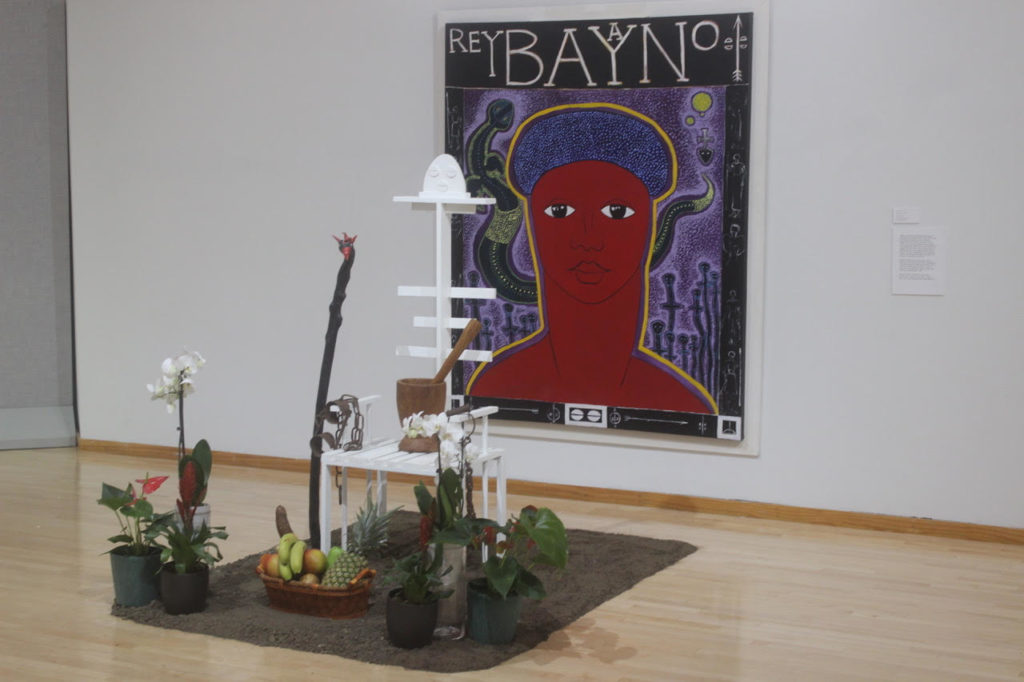
Putting the exhibit together was complicated by BGSU being unable to secure loans from galleries and museums. A Midwestern university just doesn’t have the pull with some major institutions, the curator said.
The David C. Driskell Center at the University of Maryland provided a couple pieces. (Curlee Raven Holton from the center will speak about the legacy and vision of artist and activist Driskell on Nov. 4 at 4 p.m.) And Harris was able to secure “Stanch” by Alison Saar, focus of a one-woman show at the Toledo Museum of Art last year, and Ebony Patterson’s “Untitled (Blingas II) from Gangstas for Life”
Most works were provided by the artists themselves.
Harris said the show also looks at art and “its social implications and its emergence from the practices of people’s lives.”
He continued “sometimes contemporary art can kind of be disconnected from people’s lives and being in this esoteric realm that you can’t get to if you’re not an insider.”
Central to his approach is the inclusion of the “Watch the Throne” by Fahamu Pecou. The installation includes a refurbished barber’s chair with three digital screens projecting video of men having their hair cut.
The barbershop, Harris said, is like a sanctuary.
A sense of style adds to the immediacy. “Dandy,” one of several New Orleans photographs by Eric A. Waters, shows a young man ready to step out in a red suit. This seems as much a costume as the dress of Black Masking Indians who march in the Mardi Gras parades, also documented by Waters.
That sense of style as performance is evident throughout, whether in the 1940s school picture collaged in “School Days 1947-48” by Radcliffe Bailey or the contemporary figures in “Pat and Lil’ Pat” by Alfred Conteh and “Faking the Fear” by Tyrone Geter.
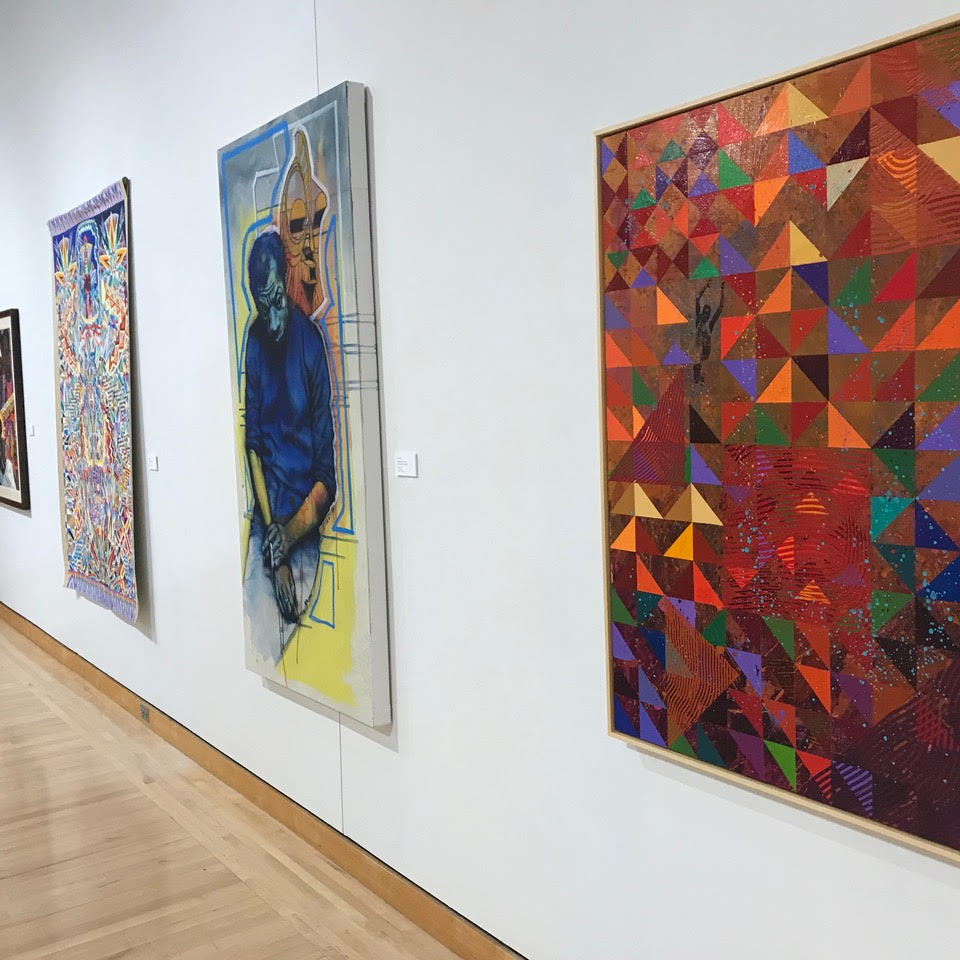
There are also tributes to heroes. Ernest Shaw captures the mystique and complexity of James Baldwin in “Blues for Mr. Charlie.” Arturo Lindsay’s installation pays tribute the Rey Bayano, who led slave revolts in 17th century Panama. And LeRöy Clarke evokes an ancient philosopher in “Shesh Per Ankh,” an intricate pen and ink drawing.
Harris himself celebrates a personal hero, his grandfather William DeHart Hubbard, who in 1924 was the first African American to win an individual gold at the Olympics.
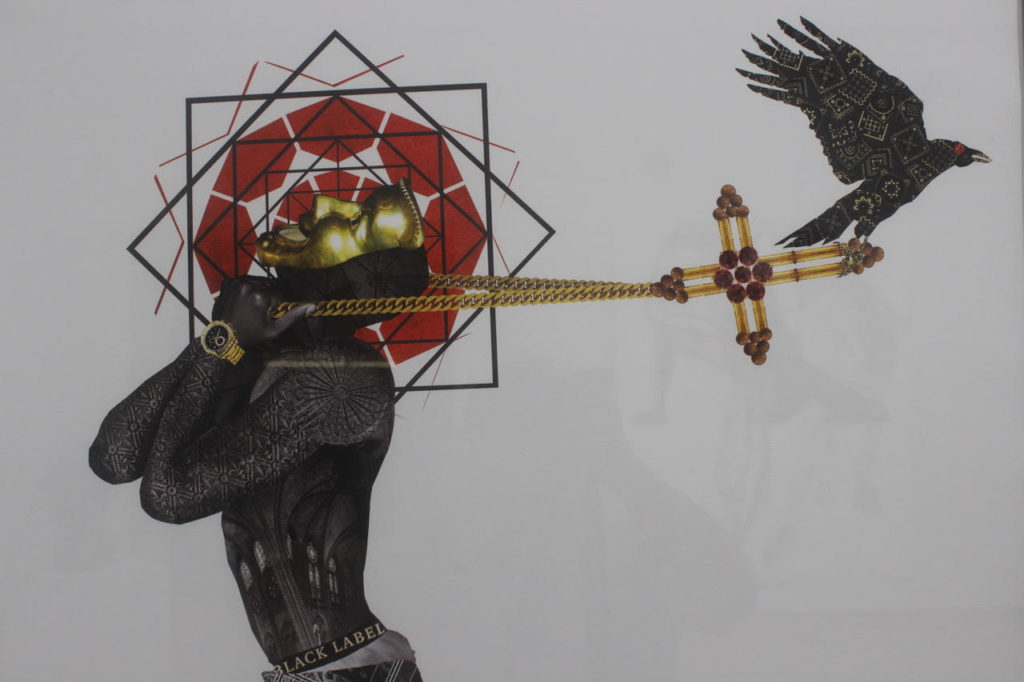
“Visible Man” also touches on the ever present racial tensions. “Noose-Sense,” a digital print by Ronald Williams reflects on the legacy of lynching. And Willis Bing Davis connects Colin Kaepernick, the quarterback who protested by kneeling during the National Anthem, and George Floyd, who died when a police officer kneeled on his neck.
Harris sees progress at his alma mater.
He remembers “impassioned conversations with art professor Willard Wankelman on whether there was such a thing as Black art. “He was not unkind, and was generous with his time to have those long conversations with a student. And here we are 50 years later, and I’m still advocating there is such a thing as African-American art.”
“Visible Man: Art and Black Male Subjectivity” is a powerful statement to that effect.

